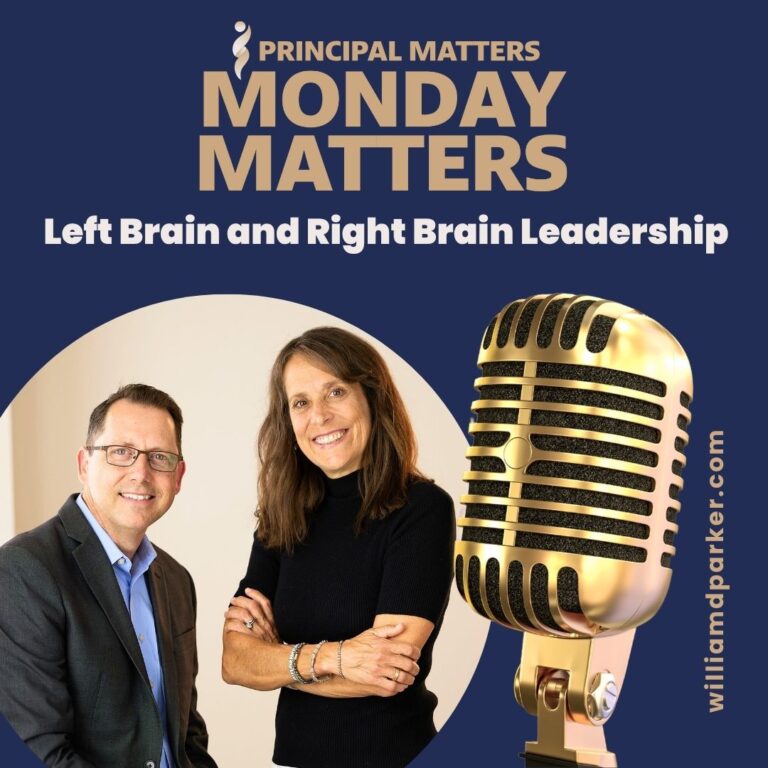Podcast: Play in new window | Download
What does it take for small actions to produce big results?

Over Christmas break, I listened to the audio-version of Malcolm Gladwell’s Tipping Point: How Little Things Can Make a Big Difference and learned some value lessons we can apply to our schools.
Let me quickly summarize by saying that Gladwell painstakingly details the phenomenon and players involved in what happens when products or ideas become social “epidemics” – in the best sense of the word. Why do certain shoe brands, books, or companies find success in such extraordinary ways? And what, you may be asking, does this have to do with school leadership? I’d like to connect those dots in this post.
First of all, products, ideas or companies become social phenomena by starting with something worth promoting – something Gladwell calls a “sticky” idea. Whether it is a great book, a fashionable shoe, or a line of plastic accessories for unique car brands — people (or customers) have needs that someone (creators or innovators) provide.
Those ideas must be “sticky” enough for others to want to adapt and participate. This is where Gladwell’s descriptions of certain types of people may be helpful to discuss because turning sticky ideas into social phenomena frequently involves the following players:
Mavens– These people identify or adopt a new trend and have the influence to model and teach others how to adapt and apply those same ideas. They are early-adapters and innovators who recognize new trends emerging; they buy-in first or are willing to take risks in testing out new ideas.
Connectors– These types understand sub-cultures and new trends and have relationships within various social spheres in order to bring new ideas and larger audiences together. They love to be the glue between new ideas and groups of people who can benefit from them. A connector may not be the creator of a new idea or product, but he or she becomes a champion for it.
Sales Persons– People who watch mavens and connectors and decide not only to adopt their ideas but become the story tellers for that idea. Sales persons can tell the stories of what’s trending in such convincing ways that others want it for themselves; they help growing numbers of people become consumers of the new product, trend or action.
When you combine a sticky idea with a community of mavens, connectors and sales persons, it will often begin a movement, a tipping point, when a small idea grows into something contagious and transformational.
Can School Leaders Have Tipping Points?
Let’s apply that to school and assume you understand the mission and purpose of your own. Your mission may be to educate and equip a future generation with the ideas, tools, values and social capital necessary to live full lives.
Having a vision for a great school and actually nurturing that kind of community, however, is where good ideas must become “sticky” actions. And for ideas to become actions, you must convince others to share those values and act on them too.
This where certain kinds of people play certain kinds of roles in creating tipping points. In order for a great idea to become a movement or phenomenon, you need mavens, connectors, and sales persons to play their roles.
Let’s take positive school culture as a good example. On Principal Matters Podcast, Episode 129, I interviewed researcher Heather Shaffery from the University of Oklahoma’s K20 Center. Heather shared a long-list of research showing how positive cultures and strong school leadership are intimately connected.
Those takeaways included:
School Culture & School Leaders
- Research confirms the importance of the leader in a building. If you want strong culture, you need strong school leaders.
- Strong school leaders have the ability to encourage and share leadership. They do not operate in isolation or without input.
- Strong school leaders understand the importance of meaningful listening and valuing the ideas of others.
School Culture & Teachers
- Most teachers know what constitutes good culture. But the challenge is an inability or resistance to implementing or practicing what’s best.
- When schools practice shared listening with collaboration for leadership decisions, teachers feel empowered toward stronger instructional practice.
- When teachers do not feel like their feedback is valued, they will be less inclined toward risk-taking and innovative instruction.
School Culture & Students
- Involving students in shared leadership, not just on leadership teams, but in classrooms, increases student learning and achievement.
- Teachers must explore these questions with students: What do they want to learn? What do they care about? How do you leverage their interests and input in their own learning?
School Culture School-wide
- As culture and technology shifts, bullying has increased in schools. But when schools practice strong growth in culture, the result is a decline in those negative behaviors.
- As students feel safe, secure, and accepted, the entire school culture becomes a place that encourages responsibility, trust, and achievement.*
*See the original PMP129 post for additional resources here: https://williamdparker.com/2018/10/17/pmp129-why-school-culture-matters-interview-with-heather-shaffery/
How Can You Create a Tipping Point for Positive Culture?
To create a nurturing, positive school environments, you need a principal who embraces a philosophy of strong culture and promotes those convictions in his or her actions. You need teachers whose input is valued and can participate in shaping the outcomes of your school. You need students who are encouraged in providing feedback for the direction of the school, including the instruction they are receiving.
School culture is not the sole outcome of one man or woman. A leader can build and influence culture, but the tipping point happens when he or she allows others to play crucial roles in the phenomenon.
You cannot do this alone. You need mavens, connectors and salespersons. And a strong leader is not afraid of a variety of voices, points of view, or participants in cultivating strong culture. He or she needs early-adapters to new ideas, connectors to draw others together, mavens to model and build momentum, and salesmen to convince others to join the movement or team.
The culminating factor of strong leadership combined with team members who carry, promote, model, and sell those positive ideas – this creates a tipping point in strong school culture.
Wall of Kindness
While I was writing my book, Messaging Matters: How School Leaders Can Inspire Teachers, Motivate Students, and Reach Communities, I was promoting positivity and sharing out successes of my students and teachers on a regular basis. But so were my teachers and community members. When students became involved in promoting positivity, however, something powerful happened.
Students suggested rewarding and recognizing one another for good deeds. One day some girls began leaving positive notes of encouragement on bathroom mirrors. This soon turned into a phenomenon with girls filling entire bathroom walls with notes of encouragement. Teachers posted these on social media. Parents shared the news. A local news channel came to school to report on the acts of kindness happening spontaneously among our student body. We had experienced a tipping point in our school culture.
Tipping points can also work in negative ways too. Just like positivity can be contagious so can fear and negativity. In an epilogue to the original chapters, Gladwell adds a chapter at the end of the book on how school shootings have become a tragic epidemic in American schools. The same formula is present with children embracing ideas they see modeled and acting on those impulses with deadly consequences.
Let’s Wrap This Up
Without trying to sound too dramatic, I want to make a sobering statement: Leading schools of positivity may really be a life and death choice. We cannot single handedly combat all the negativity or hate students experience in social media or real-life scenarios. But we can commit to a consistent and overwhelming drumbeat of praise, celebration, and positivity for our students. When we do, we can create schools where students feel safe to learn, challenged in their thinking, and equipped for the future ahead. If this is the mission of our school, then the small things we do really do matter.
Now It’s Your Turn
What is one step you take today to encourage a positive environment in your school? How can you invite more voices into the conversation of your school culture? In what ways are you including teachers, students and community members in helping shape the mission, vision and goals for your school?
Sign-Up For Free Updates and Ebook
You can automatically receive my newest posts and a free Ebook, 8 Hats: Essential Roles for School Leaders. Let’s keep learning together!




